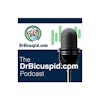
It's crucial to keep your coding books up to date, as the codes for counseling services are part of the preventive services listed in the current Code on Dental Procedures and Nomenclature (CDT) coding manual from the ADA. This practice is essential for submitting superior claims. Preventive services, a cornerstone of patient care, significantly enhance patients' dental and overall health.
As dental professionals, our role in educating patients about the value of counseling services is crucial. While patients often see the value of counseling, they may be disappointed if their insurance plan doesn't cover the benefit. It's our responsibility to guide them through this process.
For instance, an office manager contacted me with the following question: "I have a patient we counseled about nutrition due to his heavy plaque, gingivitis, and other health concerns from his diet. The patient states he doesn't remember such 'counseling' and wants to know why the charge is on his statement. How do I answer this question?"
Answer: It's important to remember that while many insurance plans list preventive services as covered expenses, coverage may be limited if the claim doesn't include specific documentation required to gain reimbursement. If the plan does not cover counseling services, informing the patient before initiating a charge is best.
Code D1310 -- Nutrition counseling
Simply listing the code on a claim form (if it is a covered benefit) is not sufficient to ensure payment. The CDT code for nutrition counseling is D1310. The claim documentation should be comprehensive, including the patient's current dietary habits, specific recommendations for any diet changes, food choices, and sugar replacement alternatives. Many plans covering D1310 may require a caries risk assessment test with a moderate to high risk recorded.
Codes D0601-D0603 -- Caries risk assessment
There are three codes for caries risk assessment, broken down by the patient's level of risk. These codes include the following:
- D0601 -- Caries risk assessment and documentation with a low risk (using recognized assessment tools)
- D0602 -- Caries risk assessment and documentation with a moderate risk (using recognized assessment tools)
- D0603 -- Caries risk assessment and documentation with a high risk (using recognized assessment tools)
Code D1320 -- Tobacco counseling
For patients who struggle with tobacco use, code D1320 can be documented and billed if the following criteria are met. Clinical notes and subsequent documentation for claim submittal must include the type and frequency of the tobacco product and risks associated with use, such as oral cancer, periodontal disease, and other risks.
Follow-up visits or evidence of referral to a medical tobacco cessation program should be required. The chart and the claim form must document any prescriptions written or recommendations and any antismoking drugs, such as nicotine patches or gum.
Code D1321 -- Counseling for the control and prevention of adverse oral behavioral and systemic health effects associated with high-risk substance use (including ingesting, vaping, injecting, and inhaling)
Suppose your 15-year-old patient admits to vaping during a routine recare examination. Vaping has become a habit, and the patient has been purchasing street vaping supplies because he cannot legally purchase them.
The hygienist and the dentist spend a considerable amount of time discussing and demonstrating the long-term health consequences of vaping and offering help for cessation. They decide to have the patient continue for follow-up visits. All of this information is carefully documented in the clinical charting.
Code D1330 -- Oral hygiene instructions
Dental hygienists teach patients how to brush, floss, and use tools and devices to remove plaque daily. If the instruction is more than rudimentary, code D1330 may be documented and billed to the insurance plan.
Documentation must include instructions for home care, including tooth brushing techniques, correct flossing, and using other oral care devices explicitly recommended for the individual patient. Any antimicrobial rinses, irrigants, medicaments, or dentifrices used to control bacterial plaque and help remineralize tooth structure must be documented on the chart and claim.
Again, a caries risk assessment may lay the foundation for using this code. Check the plans' benefits and limitations, and file advice before billing to insurance plans.
Implementing and billing for valuable counseling services is a common challenge in our field. However, the more knowledgeable we are on coding and billing claims correctly, the more benefits there are to patients. This should motivate us as dental professionals to overcome these challenges and continue providing these essential services.
Editor's note: References are available upon request.
Estela Vargas, CRDH, is the founder and CEO of Remote Sourcing, a dental insurance billing and revenue recovery service. She is a graduate of Miami Dade College's dental hygiene program. Vargas' extensive background in the clinical arena of dentistry is coupled with her experience as a practice administrator and business executive.
The comments and observations expressed herein do not necessarily reflect the opinions of DrBicuspid.com, nor should they be construed as an endorsement or admonishment of any particular idea, vendor, or organization.



















